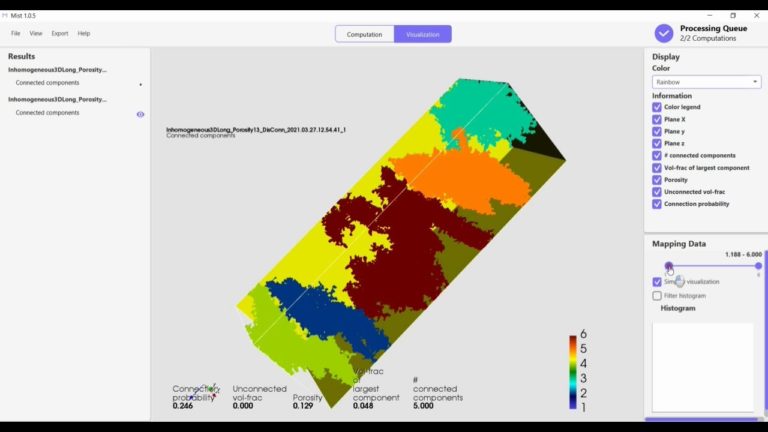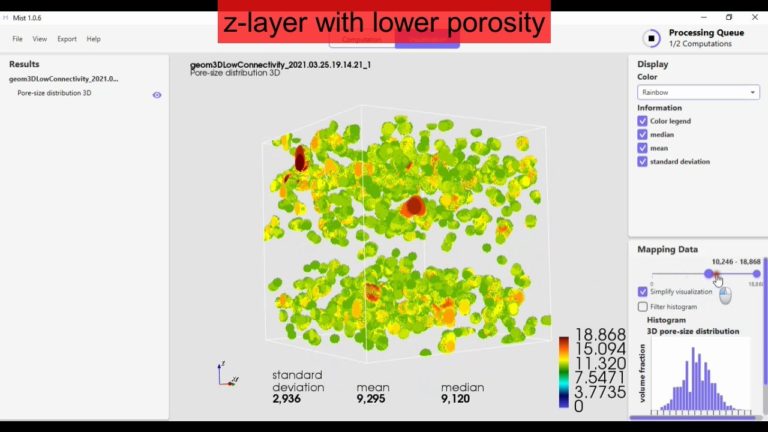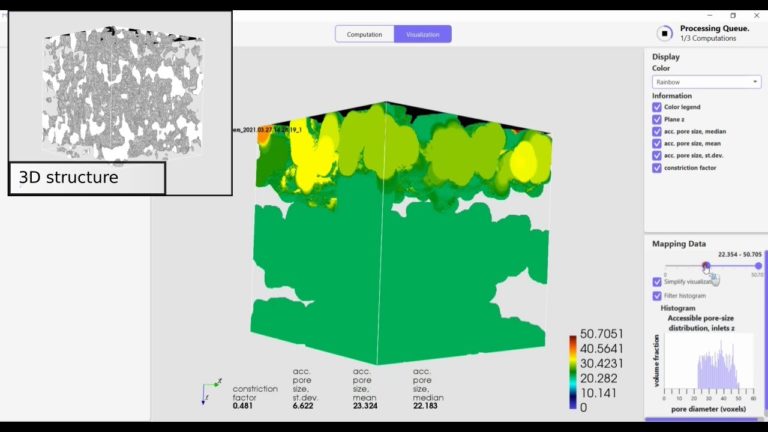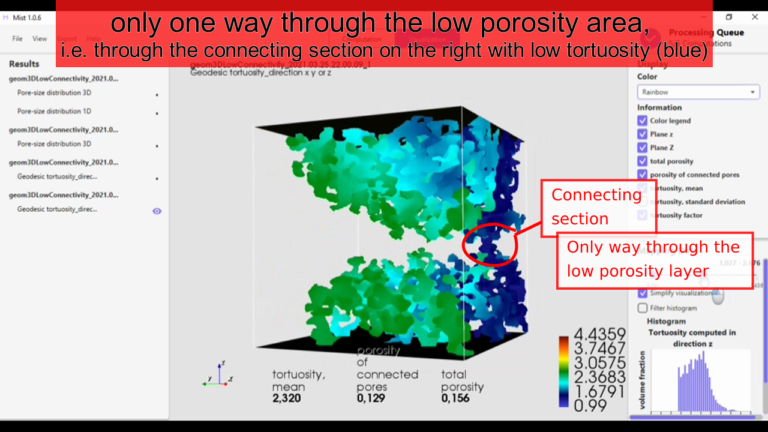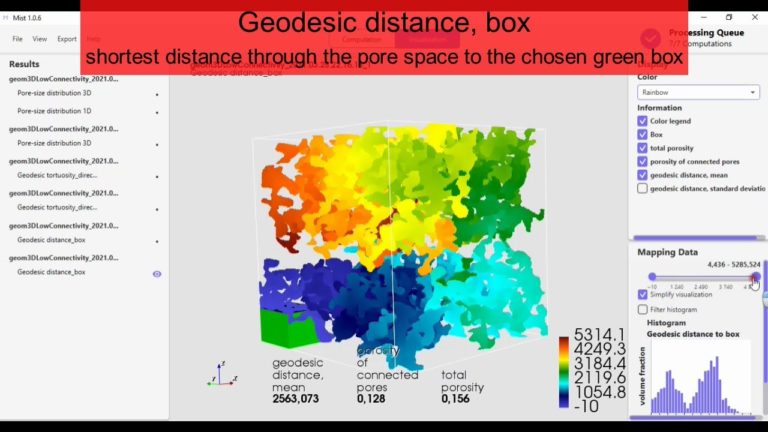How to measure the geometrical characteristics in Mist
You can find introductions to the characterization methods and detailed video instructions on how to compute them in Mist in the posts listed below.
Connected components
Connected components Connected components are computed relative chosen starting faces/planes at the edges of the volume. The starting faces can be visualized in 3D in Mist (see video and image slides below). Each component is connected to the chosen planes. The…
Pore size methods
Pore size 1D, 2D and 3D pore size The pore size methods are useful for quantifying the size and shape of irregularly shaped objects. This kind of pore size is measured with respect to simple objects, such as spheres, circles and…
Intrusion porosimetry
The intrusion porosimetry method computes the accessible pore size, which is related to the size of bottlenecks in the pore network: whereas the 3D pore size is the diameter of the largest sphere that can be inscribed in the pore, the…
Geodesic tortuosity
The geodesic tortuosity, also called geometric tortuosity, is based on computations of distances/shortest paths through the pore space. Note that there are many definitions of tortuosity, some that are based on computed material properties such as diffusion or electrical conductivity, see…
Geodesic distance
Geodesic distance is based on computations of distances through the pore space. In Mist you can compute the geodesic distance to a chosen box or to a chosen inlet (starting face). Definition, geodesic distance to a boxThe geodesic distance in voxel…
See the Tutorial, Advanced use for introductions to the connectivity methods geodesic paths and geodesic channels.
